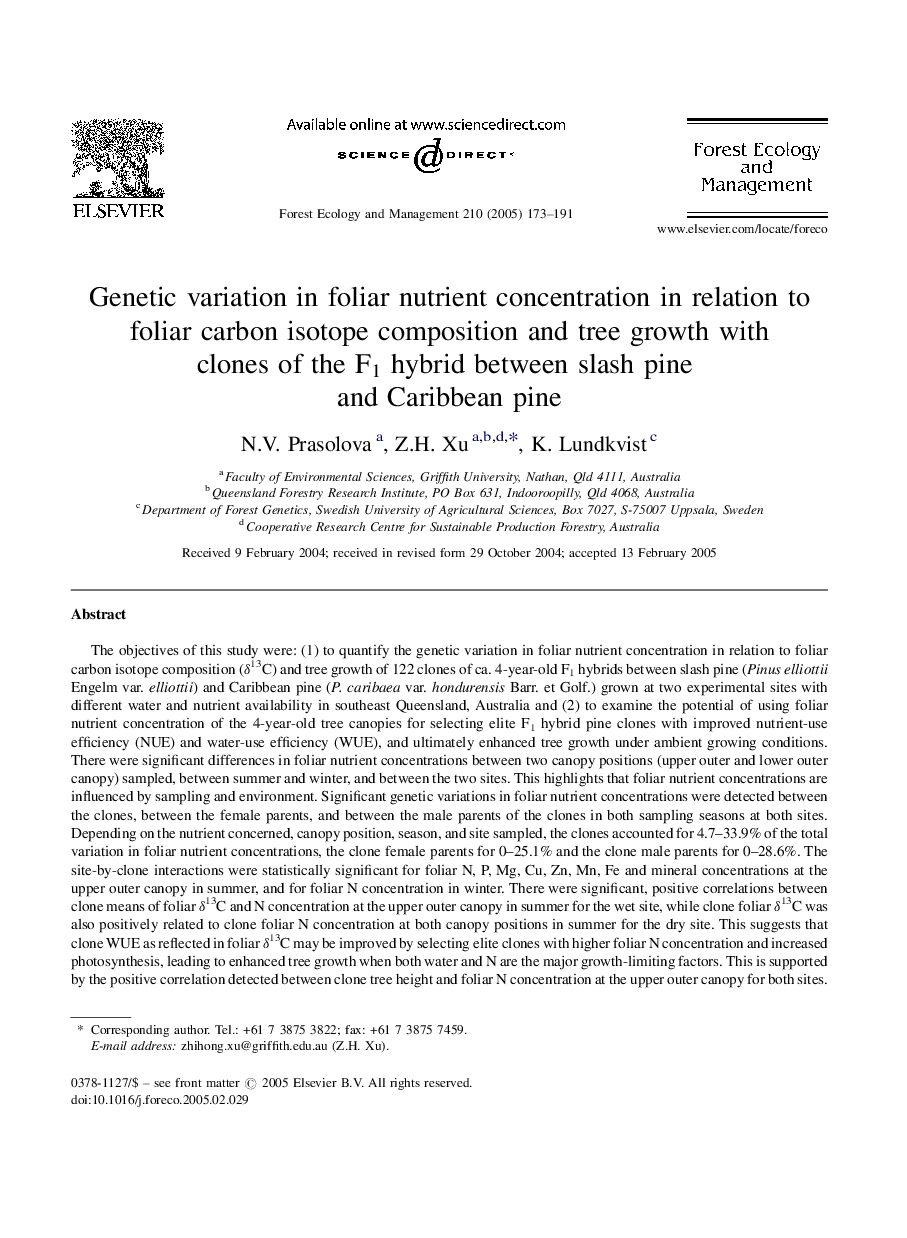| Article ID | Journal | Published Year | Pages | File Type |
|---|---|---|---|---|
| 9620363 | Forest Ecology and Management | 2005 | 19 Pages |
Abstract
The objectives of this study were: (1) to quantify the genetic variation in foliar nutrient concentration in relation to foliar carbon isotope composition (δ13C) and tree growth of 122 clones of ca. 4-year-old F1 hybrids between slash pine (Pinus elliottii Engelm var. elliottii) and Caribbean pine (P. caribaea var. hondurensis Barr. et Golf.) grown at two experimental sites with different water and nutrient availability in southeast Queensland, Australia and (2) to examine the potential of using foliar nutrient concentration of the 4-year-old tree canopies for selecting elite F1 hybrid pine clones with improved nutrient-use efficiency (NUE) and water-use efficiency (WUE), and ultimately enhanced tree growth under ambient growing conditions. There were significant differences in foliar nutrient concentrations between two canopy positions (upper outer and lower outer canopy) sampled, between summer and winter, and between the two sites. This highlights that foliar nutrient concentrations are influenced by sampling and environment. Significant genetic variations in foliar nutrient concentrations were detected between the clones, between the female parents, and between the male parents of the clones in both sampling seasons at both sites. Depending on the nutrient concerned, canopy position, season, and site sampled, the clones accounted for 4.7-33.9% of the total variation in foliar nutrient concentrations, the clone female parents for 0-25.1% and the clone male parents for 0-28.6%. The site-by-clone interactions were statistically significant for foliar N, P, Mg, Cu, Zn, Mn, Fe and mineral concentrations at the upper outer canopy in summer, and for foliar N concentration in winter. There were significant, positive correlations between clone means of foliar δ13C and N concentration at the upper outer canopy in summer for the wet site, while clone foliar δ13C was also positively related to clone foliar N concentration at both canopy positions in summer for the dry site. This suggests that clone WUE as reflected in foliar δ13C may be improved by selecting elite clones with higher foliar N concentration and increased photosynthesis, leading to enhanced tree growth when both water and N are the major growth-limiting factors. This is supported by the positive correlation detected between clone tree height and foliar N concentration at the upper outer canopy for both sites. Thus, foliar nutrient (particularly N) concentration, together with foliar δ13C, may be useful for assisting in selection of exotic pine clones with improved NUE and WUE, and enhanced tree growth under the nutrient- and water-limiting environments.
Related Topics
Life Sciences
Agricultural and Biological Sciences
Ecology, Evolution, Behavior and Systematics
Authors
N.V. Prasolova, Z.H. Xu, K. Lundkvist,
